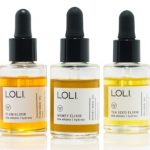The Telemedicine Startup That Wants To Zap Acne For Good
Telemedicine has its drawbacks. There are state and federal regulations to contend with, complicated interstate licensing requirements, and the lack of patient-doctor physical interaction. But one medical area seems ripe for remote diagnosis: acne.
The stuff of Noxzema ads and teenage angst has found a worthy warrior in Curology, a startup focused on treating acne. Founded by a dermatologist, Curology is the first online service that offers both telemedicine diagnosis and monthly customized prescription skin care, all for $19.95 per month. Forerunner Ventures, the venture capital firm behind Warby Parker, Bonobos, and Birchbox, recently announced their participation in a $15 million investment round, pushing the new company to redefine the assault on pimples.
“We have all these people living with acne, not realizing how easy it is to fix,” Curology cofounder Dr. David Lortscher says. While previously running his own practice in New Mexico, he encountered many acne sufferers who all said the same thing: Why didn’t I come see you years ago?

“I would ask them why [they hadn’t], and the reason would be, ‘I didn’t think I could afford a dermatologist,’” he says.
The majority of these patients—including many young adults—had insurance coverage. They were held back by two major obstacles. First, the lack of skin doctors in their areas. There are only 9,000 dermatologists in the U.S., and most are located on the coasts.
Second, copays are often high, and medications are not only expensive, but also often not even covered. Pharmaceutical companies can charge a markup in excess of 10,000%. A tube of Retin-A can cost a whopping $200. “These are medications that should cost what Advil costs because they’re generic,” Lortscher says. Curology, by contrast, works on a smaller margin. “The key is that we skip the markup that happens from the pharmaceutical company and the pharmacy.”
Over-the-counter products such as Neutrogena, Clean & Clear, and Proactiv work for 40% of the affected population. But those whose skin doesn’t respond to lower-dose creams need to see a dermatologist. And for people either too busy or embarrassed to seek a doctor’s assistance, Curology wants to help.
The process is simple. Consumers fill out a questionnaire that covers everything from diet to medical history to how easily one’s skin is irritated. Then they upload three photos of their skin with their smartphone (no flip phones allowed) to demonstrate key problem areas. Unlike other areas of dermatology, like moles or skin cancer screenings, acne requires no biopsies and can be diagnosed visually, which in many experts’ opinions, makes it ideal for telemedicine.
“If we get a high resolution image of somebody, it’s just as good as seeing someone’s skin,” Lortscher says, adding that the staff asks patients to resubmit photos for better clarity less than 2% of the time.
Following diagnosis, patients are assigned a dermatologist or nurse practitioner based at the company’s laboratory in San Diego who prescribes a formula containing three active ingredients, each tailored to their skin needs. Bottle ingredients vary for each individual, but every formulation has been previously created and tested in a lab to ensure product safety. Certain ingredients aren’t customized in concentration because they’re proven to work at a specific percentage active, such as clindamycin phosphate, which is always at 1%. Other ingredients, like Tretinoin, are extremely sensitive to concentration variations and are customized from 0.009% to 0.14%. “That needs to be very carefully tweaked,” Lortscher says.
Patients are encouraged to upload additional photos of their progress throughout their treatment and can contact the medical staff at any point, with a response guaranteed within 24 hours. By controlling medication prices and simplifying access to doctors, Curology is hoping to solve two of the biggest hurdles acne sufferers face. “No other telemedicine service does that,” Lortscher says.
Beauty expert and Today show contributor Bahar Takhtehchian believes there is room for this type of service in the marketplace. From what she encounters with U.S. consumers, time saving and simplicity top people’s skin care lists.
“What people value more now is convenience,” she says. “I think consumers probably like the fact that [Curology] is accessible, it’s fast, it’s convenient . . . and people love customization.”
When Lortscher cofounded Curology with fellow dermatologist Dr. Nancy Satur in 2014, he wanted to ensure that he could maintain the same level of care as in his private practice. But he’s found that his current work is “better” (as he puts it), more effective than what his doctors were able to execute in the traditional model. This is primarily because of their access to patients’ before-and-after photos as well as regular progress reports from the patient. By following the process closely, the doctors can tweak patients’ treatments as needed.
“There’s no guessing,” Lortscher says. “The patients can log in, look at their photos side by side . . . It’s really just a crazy advantage of using the optical technology.” And should they have a question or concern, patients no longer have to wait weeks for an appointment.
Curology currently has 30,000 patients, and the largest customer base is not teenagers, as you might expect, but women in their early twenties. The company attributes this to the fact that it’s enjoyed the most word-of-mouth promotion on college campuses and Instagram. And while Curology is growing slowly, only recently hiring a marketing director, Lortscher admits it’s been challenging to make more people aware of it.
“It’s a product category that is relatively difficult to understand and one that people don’t Google for,” he says. Even if you’re savvy about skin care, you don’t necessarily realize that there’s a way to see a doctor online. “It’s a new concept to most of America, let alone that fact that you’re going to have a medication made for you and shipped to you.”
Curology is also becoming an authority on acne research, thanks to its database. By collecting patients’ medical histories and daily food or medicine intake, doctors can identify patterns across populations. For example, Curology’s staff is now able to single out which medications cause certain types of acne. “This stuff has never been studied before,” Lortscher says. The data is being used to improve treatments as well as help the greater medical community: Curology published a comprehensive study on how birth control affects acne.
The dermatologists and nurse practitioners on staff have also become acne experts, mastering an area that before they might have only treated occasionally. “Each of them sees more acne patients in a month than a dermatologist sees in three years,” he says. This means they know every single ingredient in a popular Korean skin care bottle, as well as when to tell someone to switch birth control brands. “Patients tell us every day, ‘I’ve never had a doctor pay this much attention to me.’ And for us, that feels good.”
At the moment, Curology has no plans to expand into other areas of dermatology (like eczema). The company is focused on boosting its marketing and scaling to meet consumer demands. According to Lortscher, the number of Curology patients has tripled in the past year.
As he sees it, sooner rather than later, telemedicine will be something people actually do Google. And when they do, Curology has high hopes for treating even more Americans. “There’s no question that [telemedicine] is growing and will continue to grow,” Lortscher says.
Fast Company , Read Full Story
(42)














